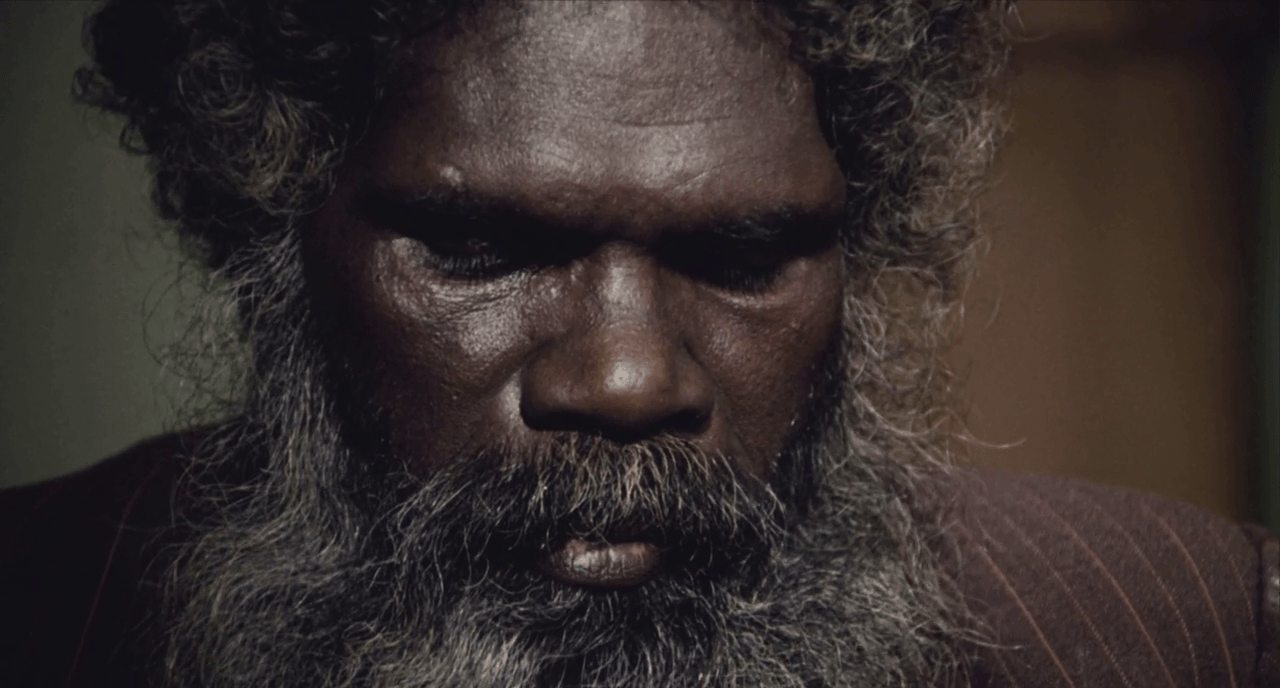David Burton is a corporate lawyer in Sydney. The city is subject to torrential rains, hail and other strange weather phenomena. He is one day assigned to defend five Aborigines who have killed a comrade. The lawyer tries to find out more and understands that it is a tribal murder.
“The dream is the shadow of something real”
Rolling thunder, blue skies. The last wave (1977) begins like a dream. A country school is caught in a deluge of rain, then hail. Joy then panic among the students. What’s going on ? Something went wrong.
Sydney, Australia. A modern metropolis where lives David Burton, lawyer, Cartesian man, married, father of two little girls, played by the American actor Richard Chamberlain. He leaves his office by car in the pouring rain. In a dream, he sees an Aborigine standing in his living room showing him an engraved stone. A little later, he really meets him. It is Chris Lee, one of the Aborigines accused of the murder of one of their congeners, played by David Gulpilil, a great Aboriginal actor discovered in the magnificent walkabout by Nicolas Roeg in 1971. He also meets an aboriginal chief, Charlie, played by Nandjiwarra Amagula (1).
David is in charge of defending these men, and his life changes. Suddenly, his dreams take on a new consistency. “The dream is the shadow of something real”, Chris told him. Yes, but of what?
David will never be the same again. He now feels connected to Chris, to Charlie, to the Aboriginal cause. The latter, indigenous people of Australia for 50,000 years, were largely eradicated by the white man. Culture and tribal law survive only in the northern territories, and in parts of the desert. But not in large modern cities. So why does this murder look like a tribal settling of scores? David seeks to unravel the mystery, puts his life in danger, moves away from his family.
How will a man react to the pragmatic approach to life when faced with a premonition? It’s all about The last wave (2). This is David’s dilemma. He discovers the history of his country, a hidden archeology that he did not know. He discovers the dream time, dream time, a spiritual cycle parallel to our world, a reading grid of the universe according to the Aborigines of Australia. Above all, he discovers himself: his ancestors being the descendants of an indigenous people of South America, he would himself be a “mulkurul”, a being endowed with the gift of divination and spiritual powers, capable of returning to resonate with tribal Aborigines like Charlie. With his strange face, with Indian features, Richard Chamberlain is perfect in the role (the actor has Native American origins).
The end of the film brings its share of revelations while preserving the mystery, like the previous film by Peter Weir Picnic at Hanging Rock. The Aborigines believe that every cycle of history ends with a cataclysm, a great wave that sweeps everything away, that cleans up to let life start afresh.
Peter Weir wanted to make a film that respects Aboriginal peoples. He involved the two main actors in the development of the scenario. He did not want urban Aborigines, but tribal Aborigines. Their main contribution to the story is that, according to them, the law is more important than man, a position opposed to ours which consists in believing that man is above the laws of nature. An idea that Weir incorporated into the dialogues.
OMNIPRESENCE OF WATER
Water is everywhere in The last wave, he is a character in his own right. It rains almost all the time, sometimes black rain. In the house, the water overflows, invades the staircase. In the car, she leaks through the car radio. In the street, she takes everything. The natural elements take precedence over civilization, highlighting its fragility.
The shoot was for Peter Weir a spiritual experience. As in any good film, the staging is entirely at the service of the narration: the sound effects and the electronic music are essential to give life to the “fictional universe” so strong, so pregnant. The admirable synthetic soundtrack by Charles Wain, in the tradition of a Vangelis, perfectly transcribes the liquid and sometimes distressing atmosphere of the film, thanks in particular to the didgeridoo. Moreover, we learn in the bonuses that Weir used music on the set to put the actors in the right state of mind. The image is tinted primarily with blue, gray and black to move away from the gold and white of the previous film.
In the end, if the film puts forward the fanciful hypothesis that an ancestral Aboriginal tribe still lives in the depths of Sydney, it is to signify the idea that the Aborigines are the repositories of a wisdom that we do not have. not tried to understand, that we swept away. This way of life cut off from our roots is our world today. That’s what The last wave is terribly current. The metaphorical subject of the film − the premonition of a disaster to come − became a reality in 2022.
Modern man knows himself badly. He has a short memory. But, whatever we do, this ancient history that we repress comes back, interferes in our dreams, in our daily life, in our lives. You just have to listen to it. As often in Peter Weir’s films, we have to pierce the veil of reality to access a higher dimension, far beyond what we imagined at the start.

